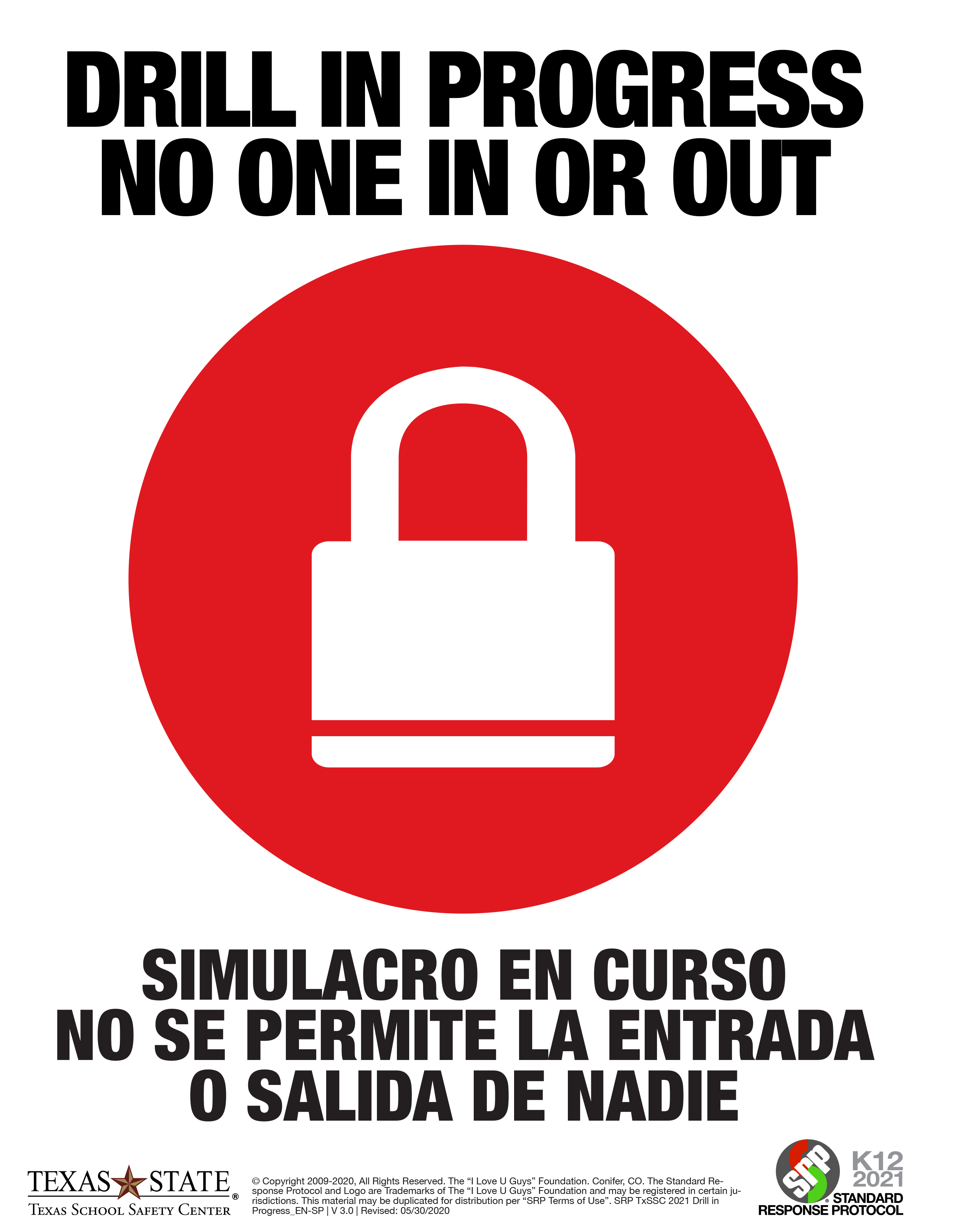TxSSC
K-12 Standard Response Protocol Toolkit
2.3 Lockdown

Condition
Lockdown is called when there is a threat or hazard inside the school building. From parental custody disputes to intruders to an active shooter, Lockdown uses classroom and school security actions to protect students and staff from threat.
Public Address
The public address for Lockdown is: "Lockdown! Locks, Lights, Out of Sight!" and is repeated twice each time the public address is performed.
“Lockdown! Locks, Lights, Out of Sight!
Lockdown! Locks, Lights, Out of Sight!”
Actions
The Lockdown Protocol demands locking individual classroom doors, offices and other securable areas, moving room occupants out of line of sight of corridor windows and having room occupants maintain silence.
There is no call to action to lock the building outside access points. Rather, the protocol advises to leave the perimeter as is. The reasoning is simple - sending staff to lock outside doors exposes them to unnecessary risk and inhibits first responders' entry into the building.
Teacher, staff, and student training reinforces the practice of not opening the classroom door, once in Lockdown. Rather, no indication of occupancy should be revealed until first responders open the door.
Incident Command System
The School Incident Command System should be initiated.
Responsibility
The classroom teacher is responsible for implementing their classroom Lockdown. If it is safe to do so, the teacher should gather students into the classroom prior to locking the door. The teacher should lock all classroom access points and facilitate moving occupants out of sight.
Reported By
Lockdown is typically reported by students or staff to the school office. The office staff then invokes the public address and informs administration.
It may also be reported to the school office by local emergency dispatch.
Preparation
Identification of classroom access points that must be locked in the event of a Lockdown is essential preparation. These may include doorways, windows, loading docks, and fire escape ladder access points.
A "safe zone" should also be identified within the classroom that is out of sight of the corridor window. Teachers and students should be trained to not open the classroom door, leaving a first responder or school administrator to unlock it.
Students, staff, and teachers should be advised that a Lockdown may persist for several hours and during an incident; silence is essential.
Drills
In Texas, Lockdown drills must be performed at least twice per school year, once per semester. If possible one of these drills should be performed with local law enforcement personnel participation. At a minimum, law enforcement participation in the drill should occur no less than once every 2 years.
For more information on Lockdown Drills see the Lockdown Drills section of this toolkit.
(Click above image to download Lockdown Drill Poster.)
Contingencies
Students and staff who are outside of classrooms when a Lockdown is announced, should get into the first available classroom with a teacher or a room that can be secured. In the event a student or staff cannot get into a room before doors are locked, they should be instructed about other options. In this situation, students and staff should be trained to hide or even evacuate themselves away from the building or area. Students and staff should receive training on where to go, if they evacuate, so they can be safe and accounted for.
If, during a Lockdown, an additional hazard manifests inside the school - i.e.: fire, flood, hazmat; then situational decisions must be made. There should be discussions about reacting to a fire alarm if it is activated during a Lockdown. This may require following additional directives of the SRP.
Examples of Lockdown Conditions
The following are some examples of when a school or emergency dispatch might call for a Lockdown.
- Dangerous animal within school building
- Intruder
- Angry or violent parent or student
- Report of a weapon
- Active shooter
Red Card/Green Card
Red Card/Green Cards should NOT be used for a lockdown. Based on a number of tactical assessments, the overwhelming consensus is that this practice provides information to an armed intruder that there are potential targets in that room.
For more information about the use of Red Card/Green Cards see Appendix B of this Toolkit.
